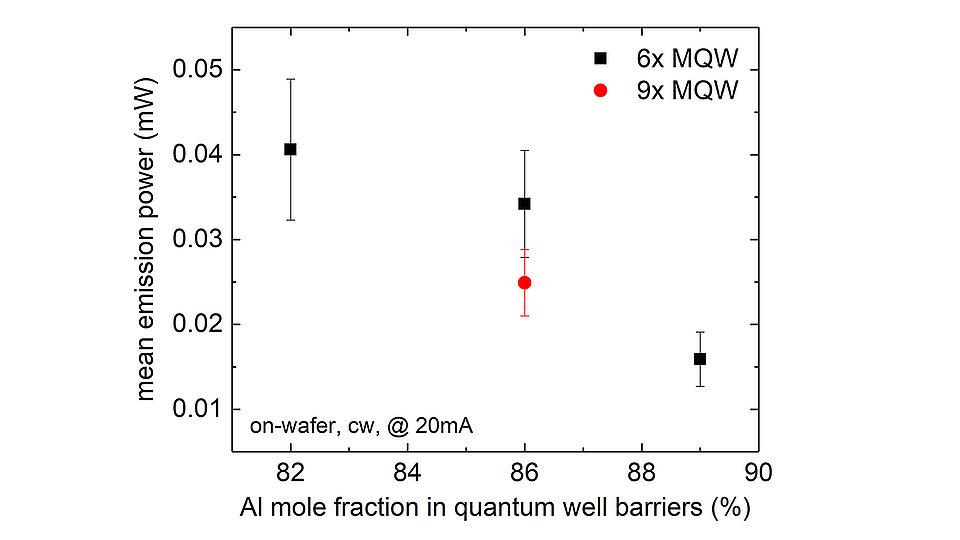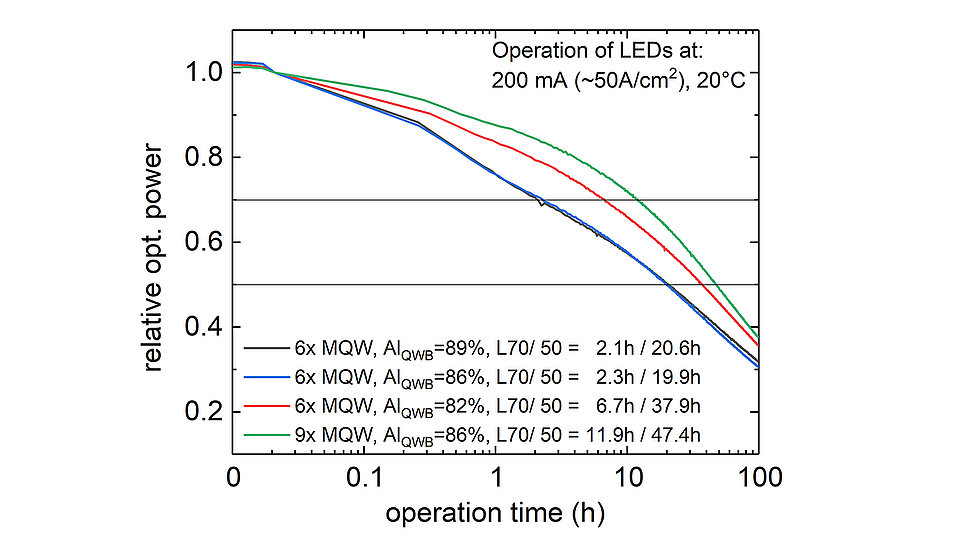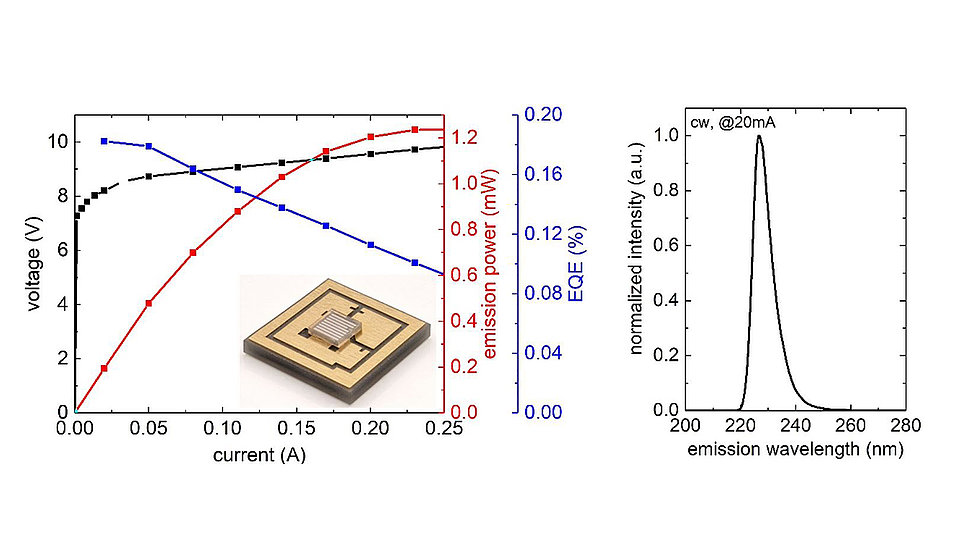Far-UVC LEDs emitting at 226 nm for sensing of nitrogen oxide
Fig. 1. Mean emission power as a function of the Al mole fraction of the quantum well barriers for 226 nm LEDs with 6 or 9 multi quantum wells (MQW). The measurements were carried out on-wafer @ 20 mA (cw).
Fig. 2. Relative optical power as a function of the operation time for 226 nm LEDs with different Al mole fractions of the quantum well barriers and different quantum well numbers.
In recent years, nitride-based LEDs with emission wavelengths shorter than 240 nm have attracted more and more attention. They are beneficial light sources for skin-safe disinfection, especially to eradicate multi-drug-resistant germs, as well as for gas sensing applications. One particularly interesting toxic gas that needs to be monitored in exhaust systems of combustion engines and power plants is nitrogen oxide (NO), which has a sharp absorption line at 226 nm. Currently, bulky and expensive light sources based on gas discharge lamps and optical filters are used for monitoring. Therefore, the demand for small, compact, and reliable light sources with this emission wavelength – as provided by light emitting diodes (LEDs) – is high. However, LEDs emitting at wavelengths below 240 nm so far have wall-plug efficiencies in the range of 1 % or less. Furthermore, the efficiency decreases drastically when the wavelength is reduced, with a factor of two every 2 nm.
During the last year, we have started developing 226 nm LEDs that are based on findings from our previously optimized 233 nm LEDs. We have accordingly increased the Al mole fraction of the n-AlGaN contact layer from 83 % to 87 % and adjusted the Al mole fractions of the 6-fold quantum wells and the quantum well barriers. One challenge here was to find a good compromise between conductivity and transparency for the emitted light of the active region in the n-AlGaN contact layer.
In a first study, we investigated the influence of the quantum well barrier height on emission power (Fig. 1) and lifetime (Fig. 2). For this, the Al mole fraction of the quantum well barriers was changed from 82 % to 89 %. We found that the mean emission power as well as the lifetime drops with an increasing Al mole fraction of the quantum well barriers and therefore with an increasing barrier height. In a second experiment, we compared 226 nm LEDs with the same quantum well barrier height (Al mole fraction 86 %) but with different quantum well numbers. We observed that the sample with the 9-fold quantum well shows a 30 % lower mean emission power compared the 6-fold quantum well LED (see Fig. 1). In contrast, however, the L70 lifetime of the 9-fold quantum well LED could be increased by a factor of more than five (see Fig. 2).
Based on these optimizations, 226 nm LEDs are now available for use in gas sensing. They yield a peak external quantum efficiency (EQE) of 0.18 % (wall plug efficiency of 0.12 %), an emission power of 1.2 mW, and an operation voltage of 9.6 V at 200 mA (see Fig. 3). We expect further improvements of the LED performance, e.g., from combining larger quantum well numbers with a low quantum well barrier height as well as an adjusted n-AlGaN contact layers with an improved transparency.


